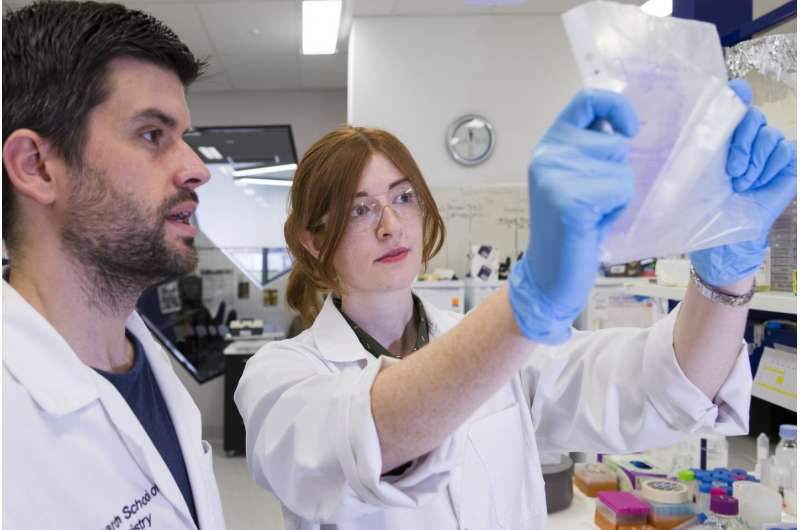Study to help solve medical and industrial challenges

An international study led by The Australian National University (ANU) will help underpin the development of next-generation medical treatments and industrial applications such as removing pesticides from waterways.
Lead researcher Associate Professor Colin Jackson said the study significantly improved scientific understanding of the way that enzymes can change their function.
Enzymes are the molecular machines that speed up chemical reactions in biology and are required for many medical and industrial innovations.
"One of the biggest challenges in using enzymes in medicine, industry and environmental clean-up is engineering them to do what we want them to do, rather than what they've naturally evolved to do," said Dr Jackson, who is an ARC Future Fellow at the ANU Research School of Chemistry.
"The difficulty in engineering enzymes to do these specific tasks is partly related to our poor understanding of how they really work."
To better understand how enzymes work and how their functions can change, Dr Jackson's team sped up the evolution of an enzyme in a test tube—equal to hundreds of years of evolution in nature—and captured a molecular fossil record of many different versions of the protein along the evolutionary journey.
"We observed that the change in the enzyme's function, as it evolved, was partly due to changes in the enzyme's structure, but also involved the enzyme's ability to move or change shape," he said.
"This means to engineer enzymes better we need to not only change their structure, which we understand fairly well, but also find better ways to change the way that they move in three dimensions."
Dr Jackson said previous studies had indicated that an enzyme's movement was potentially significant in terms of function. But this study showed how enzyme movements changed as they evolved and resulted in new functions.
He said the new findings would change the way enzymes were engineered for biotechnology innovations, potentially leading to the development of better enzymes to fight diseases and address industrial challenges.
The study, published in Nature Chemical Biology, involved the Australian Synchrotron and 12 scientists from Australia, Canada, the United Kingdom and France working together as part of a six-year study.
Co-lead researcher Eleanor Campbell said that enzymes were ideal for use in many industrial applications because they were environmentally friendly.
"Enzymes occur naturally so they degrade very easily in the environment, and they are very powerful catalysts because they don't depend on harsh solvents, heavy metals or things that chemists typically use in a lab to encourage a chemical reaction," said Ms Campbell, a PhD student at the ANU Research School of Chemistry.
"So, for instance, we can add pesticide-degrading enzymes to a polluted waterway and their target pesticide can be degraded naturally."Essentially, protein engineering will allow us to make tools that can speed up lots of exciting reactions without many detrimental effects."
More information: The role of protein dynamics in the evolution of new enzyme function, Nature Chemical Biology, DOI: 10.1038/nchembio.2175
Journal information: Nature Chemical Biology
Provided by Australian National University


















